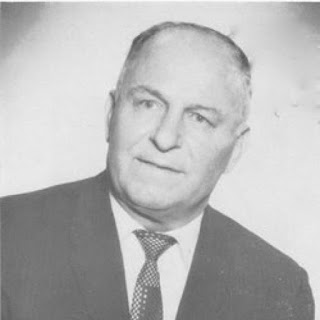Much-loved star with long and varied career
 |
| Raffaella Carrà has been one of the most popular entertainers on Italian TV for 35 years |
Raffaella Carrà, the singer, dancer, television presenter,
and actress often simply known as la Carrà or Raffaella, was born in Bologna on
this day in 1943.
Carrà has become a familiar face on Italian TV screens as
the host of many variety shows and, more recently, as a judge on the talent
show The Voice of Italy.
She has also enjoyed a recording career spanning 45 years
and was a film actress for the best part of 25 years, having made her debut at
the age of nine. Her best-known screen
role outside Italy was alongside Frank Sinatra in the hit American wartime
drama, Von Ryan’s Express.
Carrà was born Raffaella Maria Roberta Pelloni. Shew grew up
in the Adriatic resort of Bellaria-Igea Marina, just north of Rimini, where her father ran
a bar and her maternal grandfather an ice cream parlour. At the age of eight, she won a place at the
National Dance Academy in Rome and from there moved to the Centro Sperimentale
di Cinematografie, Italy’s oldest film school.
Her film career was never more than modestly successful.
Although she has a long list of credits, she was cast mainly in small parts.
Her most successful years were the 1960s, when she had more prominent roles in
Mario Monicelli’s I compagnoni – the companions – which was a hit in Italy, and
in Von Ryan’s Express, in which she played the part of the mistress of a German
officer, which raised her profile with international audiences.
 |
| Carrà opposite Gian Maria Volontè in the 1963 film Il terrorista, directed by Gianfranco De Bosio |
It was at the suggestion of one of her directors, Dante Guardamagna,
that she changed her name. Carrà, in
fact, was his choice, after the Futurist artist Carlo Carrà, who was a particular
favourite of his.
She frequently appeared in the gossip columns, which excitedly
reported an affair with Sinatra at around the time Von Ryan’s Express was being
shot, and a longer relationship with the Juventus footballer Gino Stacchini,
her partner for eight years.
Carrà also enjoyed some success in Italian TV dramas but it
was her move into variety shows in the 1970s that would catapult her to bigger
fame. An uninhibited and daring dancer,
she pushed the limits of what was acceptable on Italian TV screens at the time,
achieving notoriety for a while as the first showgirl to reveal her belly button
on camera, in the show Canzonissima, which attracting serious criticism from
the Catholic Church, who felt it bordered in indecency.
 |
| Carrà became famous as a singer and dancer |
Nonetheless, her career took off, both as a dancer and a
singer, in Italy and in Spain, where she was almost as popular as in her home
country. The sensual Tuca tuca, written
as a song and dance presentation by her long-term collaborator and boyfriend
Gianni Boncompagni, gave her a first hit and others followed, including Chissa Se Va, A far l’amore comincia tu, and Tanti auguri, which was
probably her most successful.
She even had a hit in the United Kingdom, a difficult market
for singers from Europe, with Do It, Do It Again. Years later, a video of the
single featured in an episode of the sci-fi series Doctor Who.
Her move from performer to TV host came in the 1980s, when
as the presenter of daytime TV show Pronto, Raffaella? for RAI, a game show in
which viewers could speak to her directly by telephone, she displayed an
ability to relate both to the celebrities who appeared as studio guests and
ordinary members of the public.
More shows for RAI followed, her success bringing a move to
the Fininvest channels owned by Silvio Berlusconi and a return to RAI, where in
the mid-90s she became the host of the huge hit, Carràmba! Que Sorpresa, which
reunited long-separated friends and relatives.
Carrà sometimes presented the television coverage of the
Sanremo music competition and was Italy’s jury spokesman on their return to the
Eurovision Song Contest in 2011, which ended the country’s 13-year absence.
She became the face of the Italian national lottery for many
years, because her shows, starting with Canzonissima and continuing with Fantastico,
Carràmba! Che Sorpresa and Carràmba! Che Fortuna would incorporate the lottery
draw.
More recently, she presented Forte forte forte – a talent
show on which she worked with long-time romantic partner Sergio Jacopo – as
well The Voice of Italy.
Her Italian career ran in parallel with similar success in
variety shows in Spain, who chose her to front a gala night in 2016 celebrating
60 years of Spanish public television.
 |
| The harbour area at Bellaria-Igea Marina |
Travel tip:
Bellaria-Igea Marina is a popular resort about 14km (9 miles) from
Rimini and 35km (22 miles) from Ravenna in Emilia-Romagna.
As well as extensive sandy beaches it has a charming harbour area on the
site of the fishing village it once was. It began to develop as resort in the
early 20th century, with many tree-lined avenues running parallel with the
shore. Interesting features include the Red House, the summer residence of the
writer Alfredo Panzini, in the Via Panzini, and the ‘shell house’ in Via Nicolò
Zeno, the entire walls of which are covered in shells attached by the owner.
Travel tip:
The Centro sperimentale di cinematografia, established in
Rome in 1935, is the oldest film school in Western Europe. It is located close
to the Cinecittà studios. Classes are limited to only six students, who train
using classic 35mm equipment. Many of Italy’s finest actors and directors are
former students.




